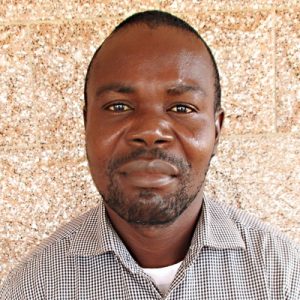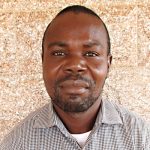Kulafai Rashideen Primary School is neatly located in the middle of the Royeama community, with houses surrounding the school compound. Two buildings form the trademark L-shape that most builders have become accustomed to making. The empty land in the front of the school building is used for the agricultural program that the school has embarked on, and also for the school assembly.
The school was built in 1994 by the late father of the current Paramount Chief, Pa Abdulahi Kamara. He was a man that believed in the power of education. He came together with some stakeholders, and an acre of land was given for the school's construction. The school began with just 75 pupils and grew to the current population of 745 students today.
The well at the school was constructed in 2012 by the stakeholders of the community. The collaborative efforts were to improve the availability of clean and safe water for the students and the community. A few years later, the well started experiencing the effects of global warming. With a rapidly reducing water table, the well ceased to produce any more water, and the students were left scrambling for water wherever they could get it. Most turn to a well located outside the school grounds that is often restricted from student use.
"As the head of the school, it is my responsibility to make sure that water, hygiene, and sanitation facilities are within reach of all students and staff. I live a few houses away from the school compound. Having this many children with no adequate water supply is simply disturbing and endangers their lives," said Head Mistress Frances Kanu.
"The situation was so bad that we had to employ the assistance of the parents to limit the time students spend out of the school to fetch water."
The school's large population requires a continuous and safe supply of water that the well cannot provide. To reduce the time spent by students fetching water for their respective classrooms, parents have taken that role and have assured the school administration that they will help provide water every day. This initiative is a temporary solution that still leaves some areas of the compound without adequate water. Due to the lack of water, the school is filthy, and the latrines are littered with feces, our teams found.
"We are not only deprived of clean and safe water, but we are also risking our lives because there are no handwashing stations to reduce our chances of contracting the greatest pandemic that has ever gripped the entire world," added Kadiatu, a student at the school.
"It is more a responsibility of the teachers, school board, and parents to hold them accountable for not providing a safe learning environment for us. I hate having to choose anyone to go for water anywhere in the community. Instead, I put pressure on my parents, and they, in turn, pressure the school teachers and other parents for water at the school."
There is only one tree in the entire school compound. Children are left with no choice but to sit and play under the hot and humid sun. The lack of shade and sufficient water supply adds to students' already terrible situation wandering from house to house for water to drink and a place to pass the time during the lunch break.
Here’s what we’re going to do about it:
Well Rehabilitation
The well marked for this overhaul is dry for a few months every year and needs major work to supply adequate, clean water to the community year-round. The pump will be removed, and a hand auger will be lowered inside and powered by a drill team. This hand auger will allow the team to drill several meters deeper to hit a sufficient water column to ensure the well supplies water throughout all seasons.
As the team drills, the casing will be installed, transforming the bottom of this hand-dug well into a borehole. PVC piping will connect this lower system directly to the pump, a construction that we know will also improve the quality of water.
Once this plan is implemented, everyone within the community will have access to safe drinking water in quality and quantity, even through the dry months.
Hygiene and Sanitation Training
There will be hygiene and sanitation training sessions offered for three days in a row.
After our visit, the hygiene and sanitation trainer decided it would be best to teach community members how to build a tippy tap (a hand-washing station built with a jerrycan, string, and sticks). They will use these tippy taps for handwashing demonstrations and will also teach about other tools like dish racks and the importance of properly penning in animals.
This training will also strengthen the water user committee that manages and maintains this well. They enforce proper behavior and report to us whenever they need our help solving a serious problem, like a pump breakdown.

 Borehole Well and Hand Pump
Borehole Well and Hand Pump
































